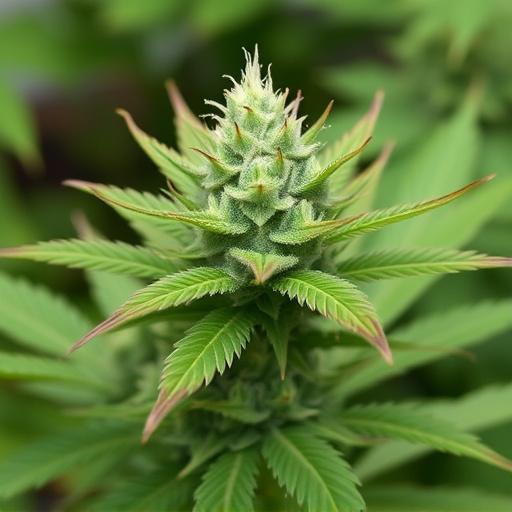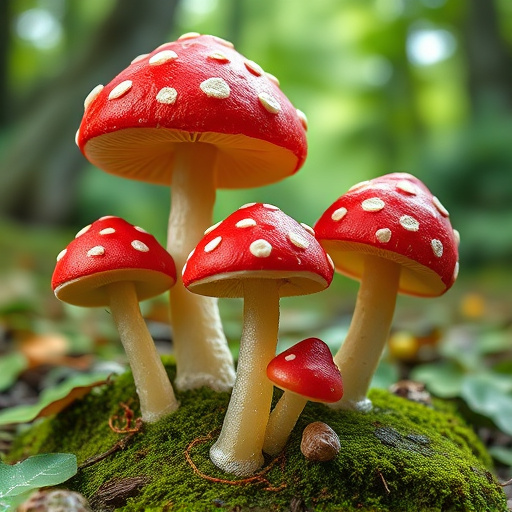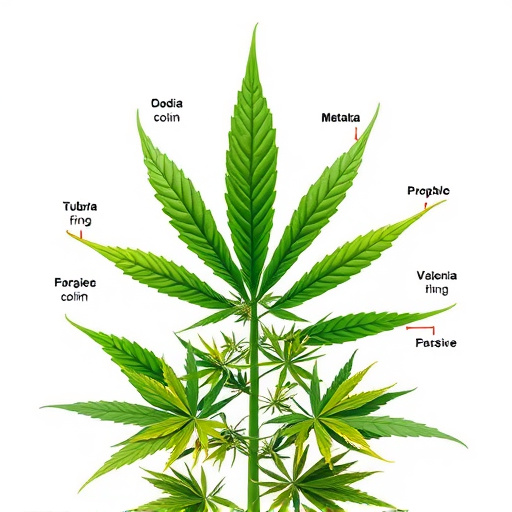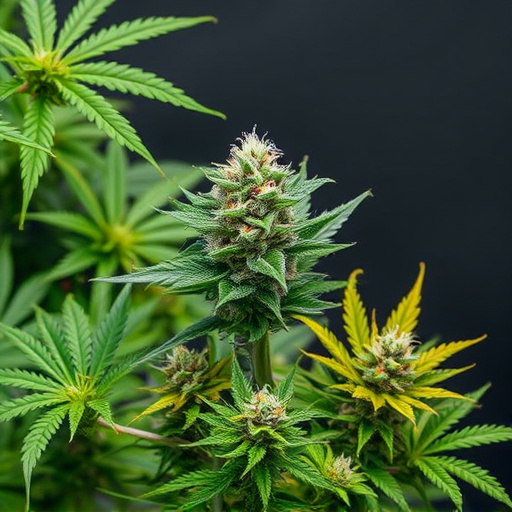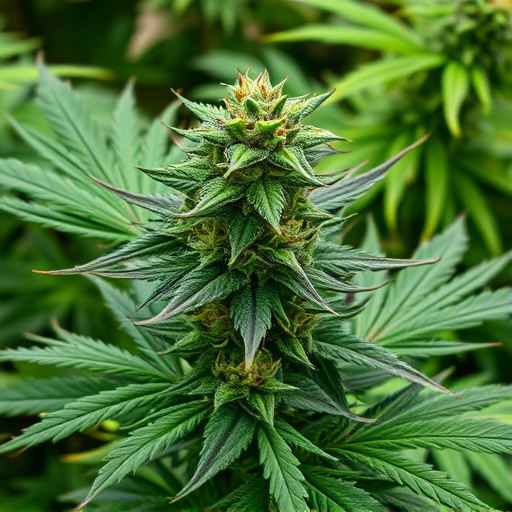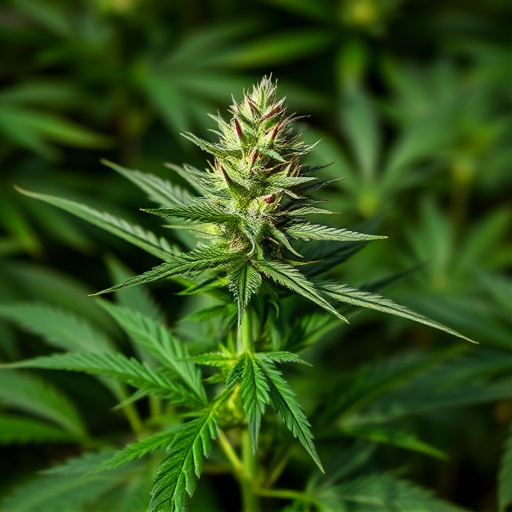The science behind cannabis' impact on appetite reveals a complex interaction of cannabinoids like THC and CBD with our body's endocannabinoid system (ECS). High-THC strains stimulate dopamine and serotonin, increasing hunger ("munchies"), while CBD-rich strains may suppress appetite by interacting with the ECS. Low-THC or CBD dominant strains are popular for managing overeating. Exploring various cannabis strains allows users to tailor effects to their needs, leveraging the ECS for personalized appetite control.
Cannabis has long been known for its ability to stimulate appetite, a phenomenon often referred to as “munchies.” But why does it have this effect? This article explores the science behind cannabis and its interaction with the endocannabinoid system, which plays a crucial role in regulating appetite. We’ll also delve into different strains of cannabis and their unique effects on hunger, providing insights for both casual users and those looking to understand specific varieties.
- The Science Behind Cannabis and Appetite Stimulation
- Different Strains of Cannabis and Their Effects on Hunger
- Understanding the Endocannabinoid System's Role in Appetite Regulation
The Science Behind Cannabis and Appetite Stimulation
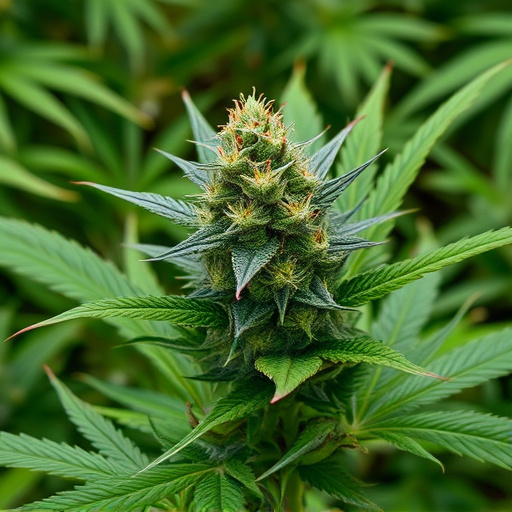
The science behind cannabis and appetite stimulation is complex, involving a dance of chemical interactions within our bodies. Cannabis contains a diverse range of chemical compounds known as cannabinoids, with THC (tetrahydrocannabinol) being the most well-known. When consumed, THC binds to specific receptors in our brains, primarily CB1 receptors, which are heavily concentrated in areas controlling appetite and reward. This binding triggers a cascade of physiological responses, leading to increased hunger.
Different strains of cannabis have varying levels of THC and other cannabinoids, influencing their effect on appetite. For instance, high-THC strains are often associated with stronger appetite stimulation, while some indica strains known for their relaxing effects may not induce significant hunger. Additionally, the endocannabinoid system, our body’s natural cannabinoid receptor system, plays a crucial role in regulating metabolism and food intake, further complicating the interaction between cannabis and appetite.
Different Strains of Cannabis and Their Effects on Hunger
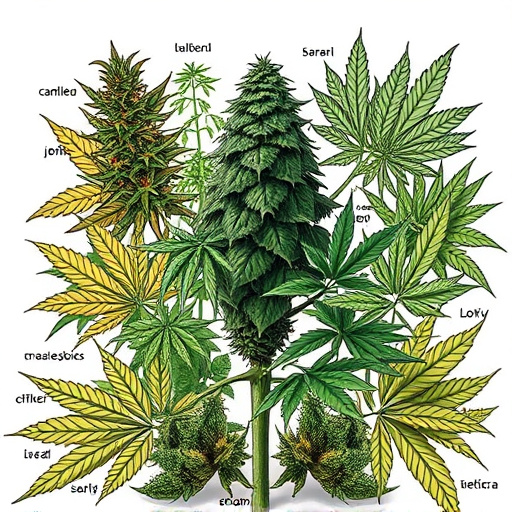
Cannabis flower’s impact on hunger is a complex interplay between various chemical compounds, notably tetrahydrocannabinol (THC) and cannabidiol (CBD). Different strains of cannabis boast unique combinations of these cannabinoids, leading to varied effects on users. Strains high in THC are often associated with increased appetite, a well-documented phenomenon colloquially known as “munchies.” This is because THC stimulates the release of neurotransmitters like dopamine and serotonin, enhancing food cravings.
In contrast, CBD-rich strains may have the opposite effect, suppressing hunger. Studies suggest that CBD interacts with the endocannabinoid system in ways that could modulate appetite. Certain low-THC or CBD-dominate strains are thus favored by those aiming to manage overeating or maintain a healthy diet. Exploring different strains can help users find the right balance for their desired effects, offering a personalized approach to cannabis consumption and its influence on hunger.
Understanding the Endocannabinoid System's Role in Appetite Regulation
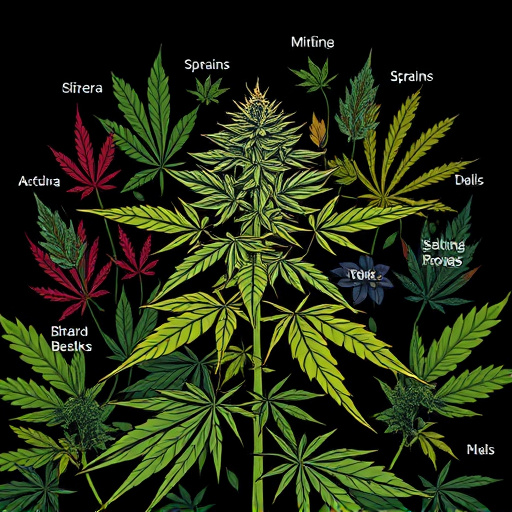
The endocannabinoid system (ECS) plays a crucial role in regulating appetite and eating behaviors, which helps us understand why strains of cannabis can stimulate hunger. This complex physiological system is named after the plant that inspired its discovery—cannabis. The ECS is made up of endocannabinoids, receptors, and enzymes that work together to maintain homeostasis, or balance, within the body. One of its key functions is controlling appetite by interacting with specific receptors in the brain and gut.
When we consume cannabis, it interacts with these endocannabinoid receptors, particularly CB1 and CB2, which are abundant in the brain and immune system respectively. Different strains of cannabis have varying ratios of THC (tetrahydrocannabinol) and CBD (cannabidiol), each affecting the ECS differently. THC primarily binds to CB1 receptors, stimulating appetite and creating that well-known ‘hunger hit’. In contrast, CBD interacts with other receptors and enzymes in the ECS, potentially influencing appetite regulation in a more subtle manner.
Cannabis’ effect on stimulating appetite is a complex interplay between various strains and our endocannabinoid system. Understanding these mechanisms not only sheds light on why certain strains induce hunger but also offers potential insights into treatments for conditions marked by weight loss or anorexia. Further research into the diverse strains of cannabis and their unique compositions could lead to more targeted therapies, harnessing the plant’s natural power to benefit human health in unexpected ways.




